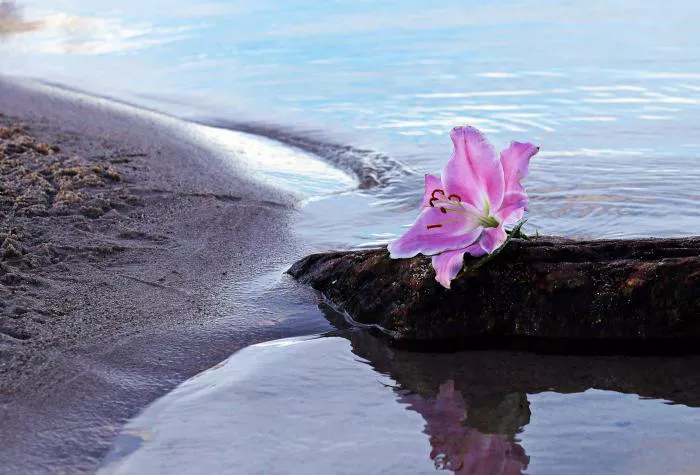In a significant marine discovery, the team at Marrawah Kelp Pty Ltd has unveiled the largest bull kelp specimen seen in nearly a quarter of a century. The remarkable find was made at Stinking Beach in Temma, Tasmania, and the specimen has set a new benchmark in size for the species.
Weighing in at an astonishing 250 kilograms and measuring an impressive 15 meters in length, this bull kelp, known scientifically as Durvillea potatorum, is considered the largest flower of the sea.
Understanding Durvillea Potatorum
Durvillea potatorum is a robust species of bull kelp that thrives in the nutrient-rich waters of southern Australia. This species is renowned for its resilience and adaptability, making it a crucial component of the marine ecosystem.
Typically, bull kelp averages around 20 kilograms in weight and grows to about five meters long. This latest discovery highlights a remarkable deviation from these norms, underlining the unique biodiversity that Tasmania’s coastal waters offer.
Significance of the Discovery
The discovery of this exceptionally large specimen is not only exciting for marine biologists and ecologists but also serves as a testament to the rich natural resources found within the Circular Head region of Tasmania. This area is known for its diverse marine life, and the presence of such a large kelp can have positive implications for local ecosystems.
Tony Jackson, a representative from Marrawah Kelp Pty Ltd, emphasized the importance of this find for the local community and the business. “This remarkable specimen is a significant boost for us and showcases the extraordinary marine treasures we have in our waters,” Jackson stated. His passion for marine life and the environment was evident as he stood beside the massive kelp, highlighting its significance for both biodiversity and local commerce.
Implications for Local Business
For Marrawah Kelp Pty Ltd, the discovery is more than just a point of pride; it represents potential economic benefits. The company specializes in kelp harvesting, utilizing this natural resource for various products, including food, cosmetics, and health supplements. The presence of such a large specimen not only emphasizes the viability of their business model but also showcases the abundance of marine resources that can be sustainably harvested.
The local community stands to benefit from increased awareness of the region’s natural wealth. This discovery could potentially attract tourists and researchers, keen to explore the unique marine ecosystems of Tasmania. As interest in sustainable practices and local products grows, the positive spotlight on Circular Head’s marine biodiversity could yield long-term benefits for local businesses.
The Role of Kelp in Marine Ecosystems
Kelp forests, particularly those dominated by bull kelp, play an essential role in maintaining the health of marine environments. These underwater forests provide habitat and shelter for numerous marine species, including fish, invertebrates, and other aquatic organisms.
Bull kelp also acts as a natural barrier against coastal erosion, stabilizing the seabed and protecting shorelines from the damaging effects of waves. Additionally, kelp forests contribute to the overall health of the ocean by absorbing carbon dioxide and producing oxygen, making them vital for maintaining ecological balance.
Environmental Considerations
While the discovery of such a large specimen is cause for celebration, it also highlights the importance of sustainable harvesting practices. As demand for kelp-based products continues to grow, it is crucial to ensure that harvesting methods do not harm the marine environment or deplete these valuable resources.
Marrawah Kelp Pty Ltd has taken steps to promote sustainable practices in their operations. This includes adhering to guidelines that ensure the kelp harvested is done so responsibly, allowing ecosystems to thrive while meeting market demands.
Tony Jackson reiterated this commitment, stating, “We recognize our responsibility to the environment and are dedicated to maintaining sustainable practices that protect our marine ecosystems.” This approach not only safeguards the environment but also promotes a positive image of the local industry.
Community Engagement and Education
The discovery of the giant bull kelp serves as an opportunity for community engagement and education. By sharing information about the importance of kelp ecosystems and sustainable practices, local organizations can foster a greater appreciation for Tasmania’s marine environment.
Marrawah Kelp Pty Ltd plans to organize community events and educational programs to raise awareness about the significance of kelp forests. These initiatives will aim to involve local residents, schools, and tourists, creating a sense of stewardship for the coastal environment.
Future Exploration and Research Opportunities
The extraordinary find of the largest bull kelp presents exciting opportunities for future exploration and research. Marine scientists and researchers can delve deeper into understanding the growth patterns and ecological impacts of such large specimens.
Studies could provide insights into how environmental factors influence the growth of bull kelp and its role in marine ecosystems. This knowledge could further inform sustainable harvesting practices and conservation efforts.
Conclusion: A Remarkable Discovery
The discovery of the largest bull kelp in 24 years is a remarkable achievement for Marrawah Kelp Pty Ltd and a significant highlight for the Circular Head region. This astonishing specimen not only serves as a symbol of the rich marine biodiversity found in Tasmania’s waters but also underscores the importance of sustainable practices in preserving these natural resources.
As the community and local businesses rally around this discovery, the future looks promising for both the kelp industry and the health of Tasmania’s marine ecosystems. Through education, responsible harvesting, and community engagement, the region can continue to thrive while safeguarding its natural treasures for generations to come.
Related topics:


